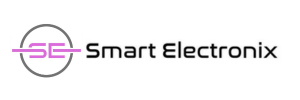
So, you’re thinking about buying a new system for coding. Maybe you’re just getting started as a developer, or maybe your old machine just isn’t cutting it anymore. Either way, we get it—you need something reliable, fast, and future-proof. At Smart Electronix, we believe every programmer deserves a system that doesn’t hold them back. In this guide, we’ll walk you through everything you need to know before purchasing a coding system in 2025.
Why Choosing the Right System Matters for Developers
Whether you’re building web apps, compiling C++ code, or training machine learning models, the right hardware makes a huge difference. A laggy system wastes time and kills productivity. That’s why choosing a coding system with the right specs is more than a preference—it’s a necessity.
Let’s explore what specs you should prioritize and what kind of budget you should plan for.
1. Processor (CPU): The Heart of Your System
For programming, the CPU is your most critical component. Multi-core performance matters, especially if you’re working with emulators, virtual machines, or heavy IDEs like Android Studio or Visual Studio.
Recommended CPUs for Coders:
- Intel Core i5 or i7 (12th Gen or newer)
- AMD Ryzen 5 or 7 (5000 series or newer)
Look for at least quad-core CPUs. The more cores and threads, the smoother your multitasking experience will be.
2. RAM: Handle Multitasking Like a Pro

Don’t let your coding environment slow down because of low memory. Your RAM affects how many tasks you can handle at once.
Recommended RAM:
- Minimum: 8GB (for basic development)
- Ideal: 16GB (for web/app development)
- Advanced: 32GB (for data science, ML, or running VMs)
More RAM allows smoother switching between browsers, IDEs, and terminals.
3. Storage: SSD Over HDD
If your system still uses an HDD, it’s time for an upgrade. SSDs drastically improve boot time, software loading, and file access speed.
Recommended Storage:
- Minimum: 256GB SSD
- Ideal: 512GB – 1TB SSD
You can also use external SSDs for backups or large project files.
4. Display: Clarity for Long Coding Hours
Your screen is your workspace. A high-quality display reduces eye strain and increases productivity.
Recommended Display Specs:
- Size: 14″ to 17″ (for laptops)
- Resolution: Full HD (1920×1080) or higher
- Type: IPS panel for better color accuracy and wide viewing angles
If you’re using a desktop, consider getting a dual-monitor setup for maximum workflow efficiency.
5. Graphics Card (GPU): Only If You Need It
For most coding tasks, integrated graphics are enough. But if you’re working with game development, 3D modeling, or machine learning, a dedicated GPU is a must.
Recommended GPUs:
- NVIDIA GeForce GTX/RTX (3060 or higher)
- AMD Radeon RX 6000 series or better
6. Battery Life (For Laptops)
If you’re going for a portable system, make sure it offers decent battery life. Nothing’s worse than running out of juice mid-project.
Recommended Battery Life:
- Minimum: 6 hours
- Ideal: 10+ hours (especially for on-the-go developers)
7. Keyboard & Build Quality
You’ll be typing thousands of lines of code, so get a system with a good keyboard—preferably backlit and responsive. Also, check for durability, especially if you’re often commuting with your machine.
8. Operating System: macOS, Windows, or Linux?
Each OS has its pros and cons. Your choice should depend on your tech stack and comfort level.
- Windows: Most versatile, supports almost all development tools.
- macOS: Great for iOS/macOS development, Unix-based.
- Linux: Perfect for open-source lovers and server-side coding.
9. Ports & Connectivity
Ensure your system has enough USB ports, HDMI, and support for external displays. Fast Wi-Fi (Wi-Fi 6) and Bluetooth 5.0 are highly recommended.
What Should a Good Coding System Cost in 2025?

Here’s a rough pricing guide based on your needs:
| User Type | Recommended Specs | Price Range (AUD) |
|---|---|---|
| Beginner Developer | i5 + 8GB RAM + 256GB SSD | $800 – $1,200 |
| Intermediate Developer | i7 + 16GB RAM + 512GB SSD | $1,200 – $1,800 |
| Pro Developer | i7/i9 + 32GB RAM + 1TB SSD + Dedicated GPU | $2,000+ |
Best Brands to Consider
These brands consistently deliver high-performance machines for coders:
- Dell XPS / Alienware
- Apple MacBook Pro
- HP Spectre / Envy series
- Lenovo ThinkPad X1 series
- ASUS ROG / ZenBook
- Microsoft Surface Laptop / Studio
Final Thoughts from Smart Electronix
Buying a system for coding in 2025 doesn’t have to be confusing. Think about your specific development needs, your budget, and future-proofing your investment. At Smart Electronix, we offer a wide range of laptops and desktops tailored for developers, whether you’re just starting out or building enterprise-level apps.
Visit us at smartelectronix.com.au or drop by our store to get expert advice and top-tier systems that match your goals. Let your coding journey begin on the right machine!
